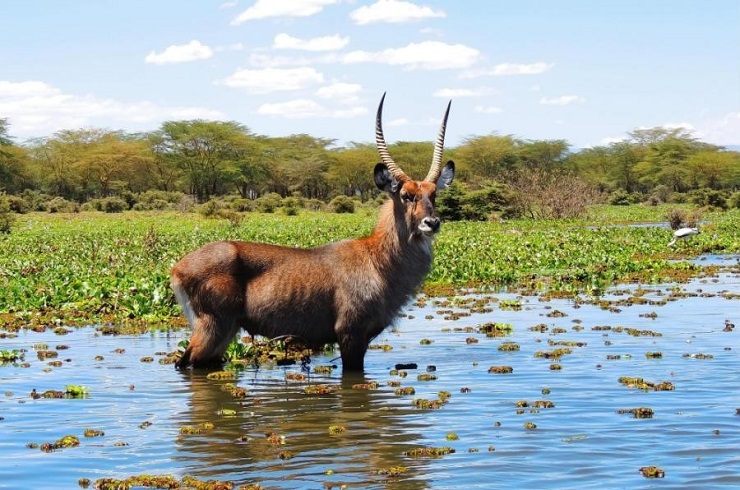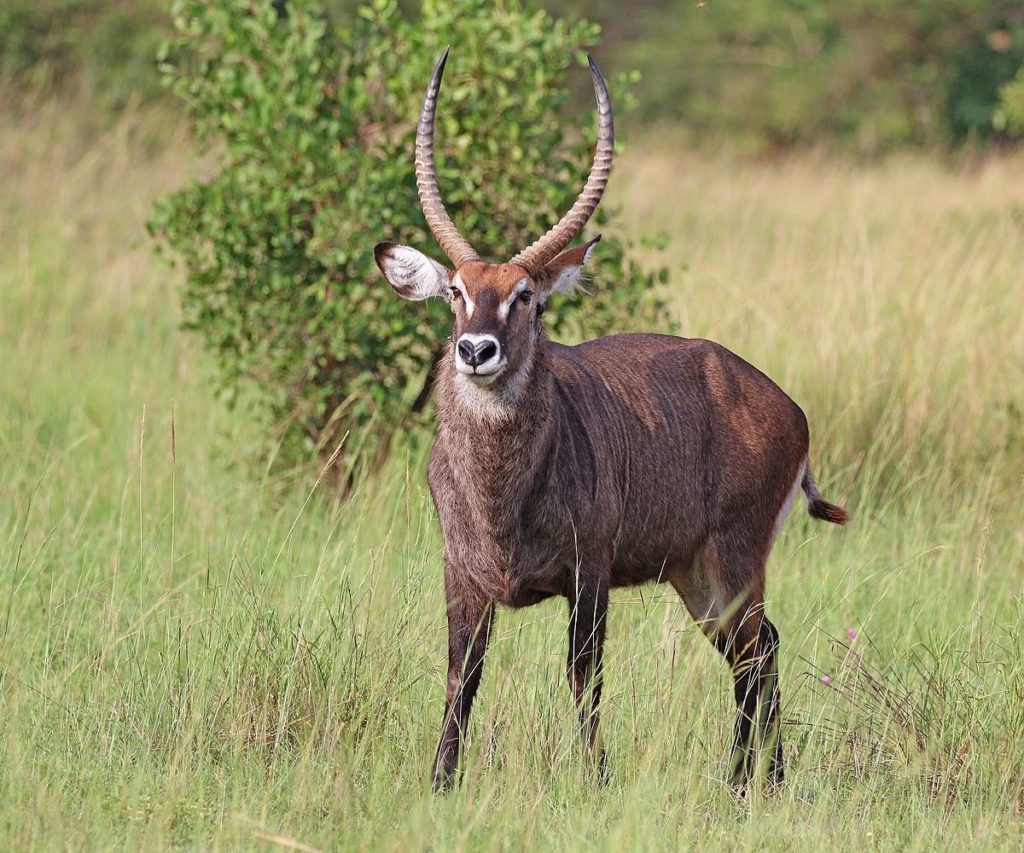The Defassa waterbuck scientifically known as “elipsiprymnus” formerly occurred throughout most of sub-Saharan Africa and have been eliminated widely within their former range, but survives in many protected areas and in some other areas which are sparsely populated by humans. Waterbucks are not actually aquatic though they are frequently found in the vicinity of rivers and lakes and will often venture into water to escape predators. The waterbuck is native to southern and eastern Africa including countries such as Angola, Botswana, The Democratic Republic of Congo, Ethiopia, Kenya, Namibia, South Africa, Tanzania and Uganda
The Defassa waterbuck is a large robust animal with long shaggy hair and brown-grey coat. It has large rounded ears and white patches above the eyes, the nose, mouth and throat. It also has wide white patches on the either side of the rump. The gestation period lasts for over eight months, and the female gives birth to a single young, which remains hidden in vegetation for at least the first two weeks of life. They have a life span of up to eighteen (18) years and weigh 148.5 – 225 kgs, males are 25% larger than females. Only male waterbuck have horns, which are curved forward and vary in length from 55 – 99 cm.
The waterbuck exhibits great dependence on water as it cannot tolerate dehydration in hot weather, and thus inhabits areas close to sources of water. The waterbuck is predominantly a grazer frequenting grasslands as they feed on coarse grasses rarely eaten by other grazing animals and occasionally browse leaves from certain trees and bushes.

The Defassa waterbucks’ behavior is that, the shaggy brown gray coat emits a smelly, oily secretion thought to be for waterproofing and that the waterbuck’s body odor is so bad that it deters predators. The males don’t mark their territory with dung or urine, as their presence and smell are apparently sufficient.
Defassa water bucks interbreed with Common waterbucks and as a result, some scientists consider the two groups as a single species.
NOTE: In East Africa, there are two species of water bucks; the Common waterbuck and the Defassa waterbuck, distinguished only by the white pattern on the rump. The common waterbuck has a conspicuous white ring encircling a dark rump, while the Defassa has wide white patches on either side of the rump.
Try Our Top Safaris

